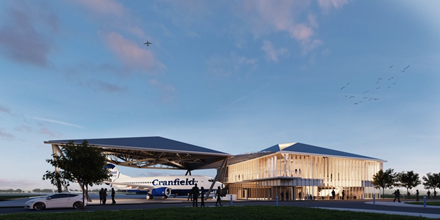Sustainable aircraft through the prism of digital aviation – what are the key levers?
23/04/2021

Digital Aviation
“That material efficiency can be realised through the deft use of data and insights is no longer in debate. In the 15 – 20 years we’ve gone from the simple digitisation of paper documents, to online delivery, to ubiquitous delivery of robust analytics-powered insights at the point of use. At this point in the journey, it’s a matter of degree, and boils down to return on investments.
What we commonly call “digital aviation” can be distilled down to this: Knowledge or insights embodied and delivered via software on, at or about an aircraft, to deliver value to aircraft operations. By its very nature digital aviation is multi-disciplined. It flows from engineering and analytics, to the realm of IT, to the asset itself, and finally has to make sense to someone’s job within the operational realm. This is why a focused, multi-disciplined, physical instantiation of digital aviation such as that at Cranfield University’s DARTeC facility is an important vehicle to move us to the next chapter.
Digital Aviation and Sustainability
Not everything we do in digital aviation supports sustainability, but much of it does, both directly and as second order results. Aircraft themselves have undergone enormous improvements in sustainability and efficiency. Since the dawn of the jet age commercial aircraft have become 70% more fuel efficient and noise has been reduced by 90%. Modern wing design, engine technology, new materials such as carbon fibre, and specific fuel enhancements such as winglets are great improvements. However, these are systemic changes to the “machine”, and not related to human choices, and are therefore not within the scope of levers in the digital aviation realm. To help scope this a bit, the Air Transport Action Group (ATAG) in their “Waypoint 2050” report estimates that 8 – 12% of CO2 reductions by 2050 will come from operations and infrastructure improvements.

We can divide this domain into operational “communities”, each with their own priorities and, importantly, cultures. Typically, these are flight operations, technical operations, and payload/cabin operations. Each of these have meaningful opportunities to drive measurable sustainability outcomes.
What the aircraft is saying to us
Aircraft speak to us. There is, however, a broad spectrum of capability to access what the aircraft is “saying”, with generally newer model and larger aircraft having more sensors, reporting, and connectivity. It takes investment to engineer and certify these capabilities, and often functions that begin in the digital aviation realm migrate to the type-certified realm when they’ve proven their value to operations.
We can, of course, monitor aircraft data to understand and manage its serviceability. Humans manage the serviceability through a complex series of trades. We can move, store, and interpret that data using different methods, and we can present those insights to our community of interest. Interestingly, the same sets of data that may be used to predict an imminent equipment failure can also be used to measure and trend key performance items such as fuel flow and thrust deviation. In this case, given the right insights, the engineer and planners in the back office can optimise choice of aircraft for a given mission. In addition, there are excellent examples where predictive maintenance has both material economic and sustainability benefits, such as avoiding fuel and operational performance penalties resulting from certain environmental control system component failures.
The pointed end of the spear
That the iPadTM and other mobile devices have only been with us for ten years now seems amazing. The proliferation of these devices to pilots, cabin crew, and mechanics as part of their work has been rapid and revolutionary. Bolstered by consumer adoption, they have had two important outcomes for digital aviation and sustainable operations. They have contributed to the overall reduction of waste by reducing needed movement of persons during ground operations. They have also brought powerful decision-making power to users at the point of use, often geared explicitly towards sustainability.
It is well known that the flight crew controls the majority of literal and figurative levers when it comes to fuel efficiency. The past five years has seen the arrival of purpose-built mobile applications designed to provide pilots with powerful insights at their fingertips. It began with bringing standard, standalone performance tools to pilots’ mobile devices, and has evolved to applications that are connected to airplane systems. Latest generation pilot mobile applications have access to up to 600 aircraft parameters and allow the pilot to choose and compare specific measures for a given flight. The net result is up to 4% fuel and CO2 savings, which is very material in supporting sustainable operations.
What does it all mean for today and tomorrow?
While there has clearly been a drastic reduction in focus on deploying discretionary capabilities during the 2020/21 downturn, especially in the commercial aviation domain, there will very likely be a rapid increase in fielding and digital solutions which deliver measurable and meaningful results as the industry rebounds. There is pent up demand for innovation.
We can say that, as a general idea, operationally efficient and pre-planned activities lead to fewer unplanned or rush activities and are by nature more sustainable. In addition, there are material opportunities to drive additional sustainable operations through helping people make the right choices based on the best available insights, where and when they need it. That is, sustainability supported by digital aviation. We’re headed for an exciting next chapter together.”
Categories & Tags:
Leave a comment on this post:
You might also like…
Keren Tuv: My Cranfield experience studying Renewable Energy
Hello, my name is Keren, I am from London, UK, and I am studying Renewable Energy MSc. My journey to discovering Cranfield University began when I first decided to return to academia to pursue ...
3D Metal Manufacturing in space: A look into the future
David Rico Sierra, Research Fellow in Additive Manufacturing, was recently involved in an exciting project to manufacture parts using 3D printers in space. Here he reflects on his time working with Airbus in Toulouse… ...
A Legacy of Courage: From India to Britain, Three Generations Find Their Home
My story begins with my grandfather, who plucked up the courage to travel aboard at the age of 22 and start a new life in the UK. I don’t think he would have thought that ...
Cranfield to JLR: mastering mechatronics for a dream career
My name is Jerin Tom, and in 2023 I graduated from Cranfield with an MSc in Automotive Mechatronics. Originally from India, I've always been fascinated by the world of automobiles. Why Cranfield and the ...
Bringing the vision of advanced air mobility closer to reality
Experts at Cranfield University led by Professor Antonios Tsourdos, Head of the Autonomous and Cyber-Physical Systems Centre, are part of the Air Mobility Ecosystem Consortium (AMEC), which aims to demonstrate the commercial and operational ...
Using grey literature in your research: A short guide
As you research and write your thesis, you might come across, or be looking for, ‘grey literature’. This is quite simply material that is either unpublished, or published but not in a commercial form. Types ...







